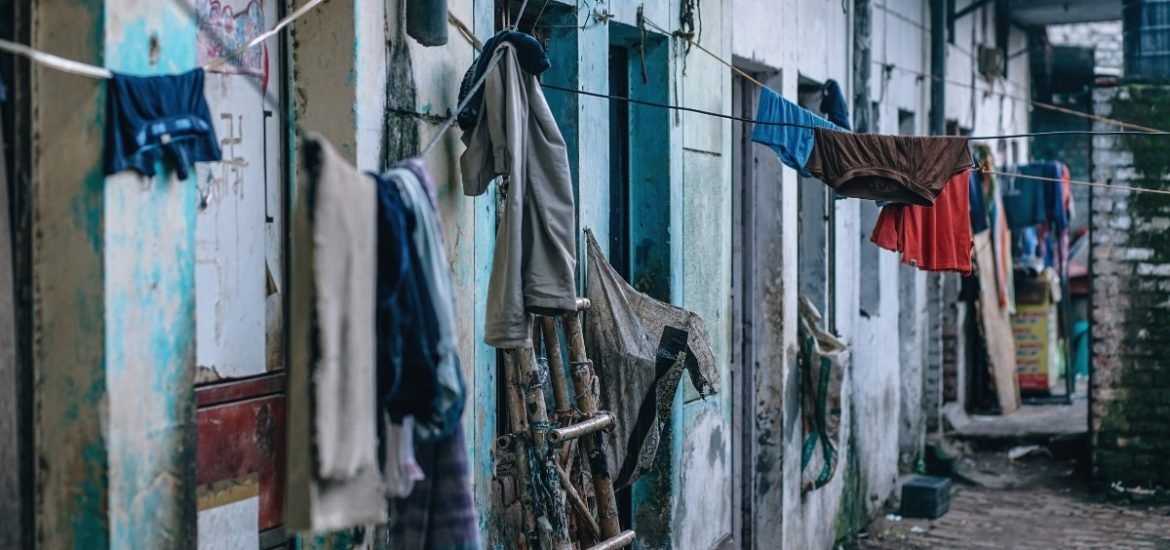
Is there a link between socioeconomic status and genes? And what influence do environmental factors and genetics have on health and life outcomes? A new study published on 8 April in Nature Human Behavior sought to better understand the impact of, and links between, socioeconomic status, postal code, and genetic risk (1). Genetic risk factors may only be a small part of the overall picture, according to the findings ― but an interesting one, nonetheless.
Social inequality is a huge stressor. Moreover, lower educational attainment and income can lead to increased risk of heart disease, diabetes, and many cancers. As the authors write, “Children growing up in disadvantaged neighbourhoods exhibit worse physical and mental health and suffer poorer educational and economic outcomes than children growing up in advantaged neighbourhoods”.
In other words, postal codes play an important role in socioeconomic status and strongly influence human health and disease, as well as education. As such, geography has become an important aspect of socioeconomic research and the focus of many policy interests. But can we reduce poverty and socioeconomic inequality by addressing postal code alone?
Postal code versus genetic code
The researchers analysed data from the Environmental Risk (E-Risk) Longitudinal Twin Study ― following 2232 children (1116 twin pairs of twins) born in England and Wales from childhood up to 18 years old ― and The National Longitudinal Study of Adolescent to Adult Health, a similar study of 15,000 American secondary school students. In particular, they examined genome-wide association studies (GWAS) for four factors: obesity, schizophrenia, age-at-first-birth, and educational attainment.
Based on polygenic (genetic) risk scores, the authors provide evidence of a link between genetics and neighbourhoods for teen pregnancy and poor educational outcomes. However, interestingly, they found that children living in worse-off neighbourhoods do not have an increased genetic risk of obesity or mental health disorders. However, future physical and mental health problems could be predicted by postal code and genetic code.
Polygenic risk score: an imperfect tool
Genome-wide association studies are helping scientists understand some of the underlying mechanism behind diseases and human behaviour. However, multiple sites on the genome can play a role in determining our fates. Thus, genetic predictions can be massively misinterpreted and scientists do still not fully understand the complexities of the human genome.
Therefore, it is important to remember that genetic risk does not cause a particular trait to occur but is simply correlated to that particular trait (2,3).
But what about the other way around? How does socioeconomic status affect our genes?
Epigenetics – the science behind change
The idea that genes are fixed at conception and do not change was discarded long ago. Now we know that gene function can, indeed, be altered throughout life. This branch of genetics is referred to as epigenetics and is becoming important in many areas of human health.
Epigenetics is known to play a role in a wide variety of illnesses and behaviours, including many cancers as well as cognitive impairment. These genetic alterations are achieved through something called DNA methylation. Certain regions of DNA are essentially “tagged”, allowing traits to be inherited much more quickly than through typical evolutionary changes.
This means that while evolutionary changes take millions of years to appear, epigenetic changes occur much faster ― within a single generation. Furthermore, the information can also be passed along with DNA to future generations.
To this end, another recent study, published on 16 February in the American Journal of Anthropology, showed that socioeconomic status is associated with DNA methylation at a large number of sites across the genome ― more than 2,500 sites, across more than 1,500 genes ― that play a crucial role in health (4). The findings suggest epigenetics may be the underlying mechanism used by the body to ‘remember’ experiences like poverty.
Towards improving health and life outcomes
So do neighbourhoods dictate the health and life chances of the children living in them? The answer seems to be, yes. Although increased genetic risk only accounted for a fraction of the differences between children living in different types of neighbourhoods.
The Nature Human Behavior study was the first to examine the links between children’s neighbourhood and genetic risk. However, the authors suggest that improving neighbourhoods may not be enough to improve life outcomes. Early studies have also alluded to the genetic and environmental roots of educational inequality ― but caution is needed when attempting to interpret GWAS results (5).
Other research is also bringing to light important associations between childhood food security and health and life outcomes. Another study recently published on 9 April in the Economics of Education Review showed that food insecurity ― limited access to food ― early in life affects learning (6).
As the global population increases and food security is increasingly threatened by global warming and unsustainable farming practices, we are going to need novel approaches to successfully meet the United Nation’s Sustainable Development Goals, which include addressing social inequalities while ensuring a sustainable future.
(1) Belsky, D.W. et al. Genetics and the geography of health, behaviour and attainment. Nature Human Behavior (2019). DOI: 10.1038/s41562-019-0562-1
(2) Lee, J.J. et al. Gene discovery and polygenic prediction from a genome-wide association study of educational attainment in 1.1 million individuals. Nature Genetics (2018). DOI: 10.1038/s41588-018-0147-3
(3) Polderman, T.J.C. et al. Meta-analysis of the heritability of human traits based on fifty years of twin studies. Nature Genetics (2015). DOI: 10.1038/ng.3285
(4) McDade, T.W. et al. Genome‐wide analysis of DNA methylation in relation to socioeconomic status during development and early adulthood. American Journal of Physical Anthropology (2019). DOI: 10.1002/ajpa.23800
(5) Martin, N. Getting to the genetic and environmental roots of educational inequality. Science of Learning (2018). DOI: 10.1038/s41539-018-0021-1
(6) Aurino, E., Fledderjohann, J., and Vellakkal, S. Inequalities in adolescent learning: Does the timing and persistence of food insecurity at home matter? Economics of Education Review (2019). DOI: 10.1016/j.econedurev.2019.03.003